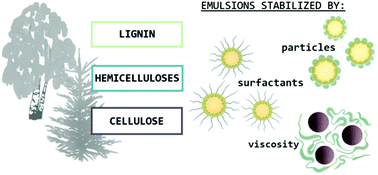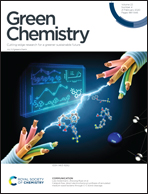Strategies for structuring diverse emulsion systems by using wood lignocellulose-derived stabilizers
Abstract
Wood biomass is an abundant renewable source of materials, but due to the accelerating depletion of natural resources, it is important to explore new ways to use it in a more sustainable manner. Modern technologies enable the recovery and valorization of the main components of wood—namely, cellulose, lignin, and hemicelluloses—contributing to sustainability. However, the method of isolation and resulting structure and purity of lignocellulosic materials determine their functionality and applicability. This review discusses the properties of all three main wood-based compounds that can stabilize emulsions, a class of industrial dispersions that are widely used in life science applications and chemicals. Due to the multi-billion-dollar annual market for hydrocolloids, the food, pharmaceutical, cosmetic, coating, and paint industries are actively seeking new sustainable emulsion stabilizers that fulfill the demanding requirements regarding safety and functionality. Wood-derived stabilizers facilitate various mechanisms involved in emulsion stabilization: (1) development of amphiphilic structures that decrease interfacial tension, (2) stabilization of interfaces by particles according to the Pickering theory, and (3) increase in the viscosity of emulsions’ continuous phase. This review presents pathways for treating cellulose, lignin, and hemicelluloses to achieve efficient stabilization and provides suggestions for their broad use in emulsions.



 Please wait while we load your content...
Please wait while we load your content...